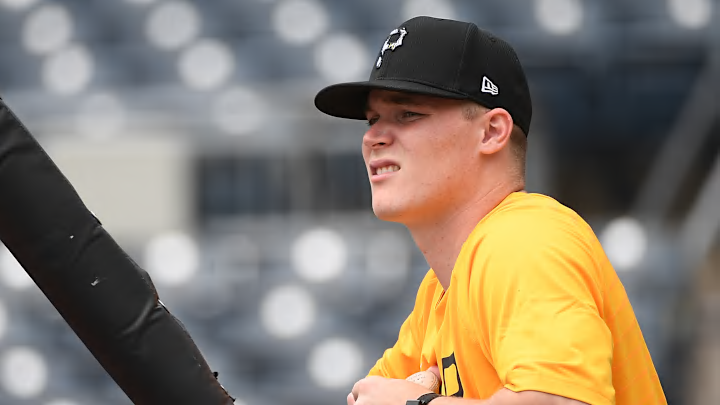Anthony Solometo's Command
Anthony Solometo was the Pirates' second-round draft pick in 2021. Although the Pirates selected him 37th overall, many saw him going within the first 30, maybe even the first 20 picks. Not only was he a projected first-rounder, but he was also considered one of, if not the best, command pitcher in the draft. The high school southpaw committed to North Carolina; however, after offering an over-slot deal worth $2,797,500, the Pirates convinced Solometo to forgo his commitment and join their organization.
Solometo's first season at Bradenton in 2022 was strong. He only pitched 47.2 innings but had a 2.64 ERA, 2.93 FIP, and 1.05 WHIP. Solometo struck out well over a quarter of the batters he faced with a 27.1% strikeout rate, but he also didn't allow a home run. Solometo also owned a 50.9% ground ball rate during this time. However, he did have a 10.1% walk rate, which doesn't fully reflect his ability to locate the ball. We'll get into that in a second.
Now at Greensboro, Solometo has a 3.68 ERA, 3.78 FIP, and 1.28 WHIP. He still has a strong 46.3% ground ball rate and HR/9 of 0.48, along with a strikeout rate now over 30% at 30.5%. However, his walk rate has upped itself to 13.9%. He's only pitched 36.2 innings, so it's a relatively small sample size.
The first thing some of you may think is, "How can Solometo be such a good command pitcher yet have such a high walk rate?" It can be easy to confuse command and control. But these are two separate things. Control is a pitcher's ability to consistently put the ball in the strike zone. Command is a pitcher's ability to hit his spots. Think of it as consistency vs accuracy. Throwing strikes doesn't always mean you have a good ability to put the ball where you want it, while a lack of strikes doesn't always mean you don't know where the pitch is going. A good example is Chicago Cubs' right-hander Kyle Hendricks. Many consider Hendricks the best modern command pitcher in baseball, yet he's consistently had an out-of-zone rate above 48%. When he finished second in Cy Young voting in 2016, his O-zone rate was 54.1%.
While Solometo's walk rate isn't great, his ability to put the pitch where he wants is unmatched by almost any other Pirates prospect in the system right now. Solometo doesn't throw a hard fastball, but he has improved his velocity and is now sitting in the low-90s. He may never be a flamethrower, but a 92-94 MPH fastball with his ability to hit his spots as effectively and as often as he can could be a real weapon. He also has a slider and change-up, the former of which projects as above average and the latter of which is an average offering.
Solometo's ability to hit his spots as good as he can only further plays up because of his deception on the mound. He's been compared to Madison Bumgarner for his wind-up, delivery, and arm slot. That's a very optimistic comparison though, one that makes sense once you see his motion and mechanics.
There's a real chance that Solometo debuts at Altoona before the end of the year, which would put him on track for a late-season 2024 debut. Keep in mind that Solometo is only 20, at a level of the minor leagues where the average age is 22.3 years old for position players (23.2 for pitchers), and is performing admirably despite the hitter-friendly environment. The talented southpaw is definitely trending in the right direction.
